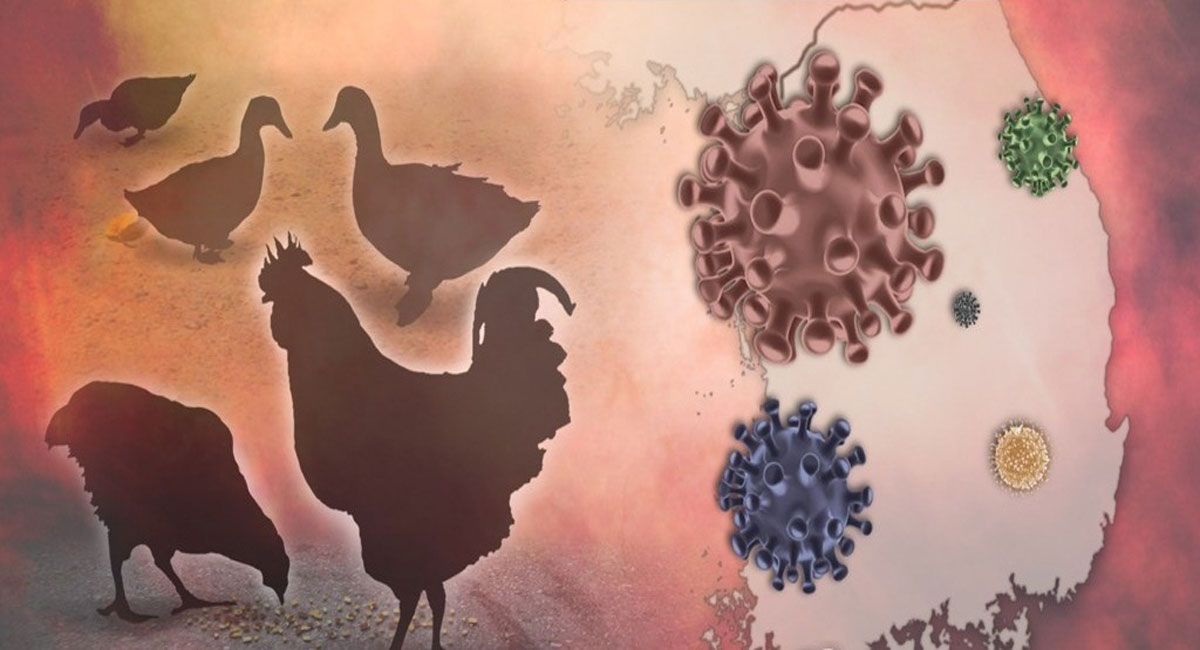Bird flu H5N1 spreads to foxes in US, 4 die
Mon 16 May 2022, 12:38:56

New York: Four red baby foxes in the US reportedly died in what is known as the first case of devastating bird flu H5N1 detected in wild mammals in the country.
The Michigan Department of Natural Resources (DNR) confirmed that three red fox kits died from highly pathogenic avian influenza.
Earlier, Minnesota officials announced a fox kit in their state had died of the virus as well.
Highly pathogenic avian influenza (HPAI) is a virus known to affect birds and is highly contagious. Besides affecting poultry, this viral strain also affects waterfowl, raptors and scavengers (like turkey vultures, eagles and crows).
“Wild animals can sometimes transmit diseases to humans, and while we typically think of rabies or other well-known diseases as the primary concerns, this shows that there are other risks to keep in mind as well,” said Dr. Joni Scheftel, state public health veterinarian with the Minnesota Department of Health, in a statement.
“The best advice is to avoid contact with wildlife that appear sick or injured and contact your healthcare provider if you are bitten or have other close contact with wildlife,” he added.
According to Michigan officials, the fox kits in the state exhibited neurologic signs of HPAI before death. The kits were observed circling, tremoring and seizing.
Two of the three died within hours of intake, while one appeared to respond to supportive therapy but then died in care.
Interestingly, an additional kit that was a
sibling of the Macomb County kit did survive, but developed blindness, making her non-releasable, the officials said.
sibling of the Macomb County kit did survive, but developed blindness, making her non-releasable, the officials said.
The virus was detected in swabs collected from the nose, mouth, throat and brain tissue of all three kits, and a full postmortem examination was conducted to aid in learning more about this disease in foxes.
Last week, two red fox kits in Ontario, Canada also tested positive for HPAI. Those kits were the first reported cases of the current HPAI outbreak in a wild mammal in North America.
Although the virus mainly affects birds it occasionally jumps to humans, especially those in close contact with poultry, and the death rate is as high as 50 per cent.
The World Organisation for Animal Health (or OIE) said it has seen a significant increase in reports with various subtypes – including H5N1, H5N6 and H5N8 – found in well over 40 countries.
In April, a man in Colorado became the first to test positive for bird flu in the US, but suffered only ‘very mild’ symptoms from the infection.
Earlier this year, China reported two human cases of bird flu H5N6 in a 68-year-old man from Sichuan Province and a 55-year-old woman from Zhejiang province. The Hong Kong Health department, in a statement, said that the two people are in a “critical condition” in hospital after contracting H5N6 avian influenza.
Rare human case of bird flu was also detected in a person living in the South West of England, UK.
No Comments For This Post, Be first to write a Comment.
Most viewed from International
Most viewed from World
AIMIM News
Delhi Assembly polls: Owaisi leads Padyatra in Okhla
Feb 01, 2025
We reject this Waqf Amendment Bill: Asaduddin Owaisi
Jan 30, 2025
Latest Urdu News
Most Viewed
May 26, 2020
Which team will win the ICC Men's Champions Trophy 2025 held in Pakistan/Dubai?
Latest Videos View All
Like Us
Home
About Us
Advertise With Us
All Polls
Epaper Archives
Privacy Policy
Contact Us
Download Etemaad App
© 2025 Etemaad Daily News, All Rights Reserved.












.jpg)
.jpg)
.png)
.jpg)
.jpg)
.jpg)
.jpg)
.jpg)
.jpg)

.jpg)
.jpg)


















